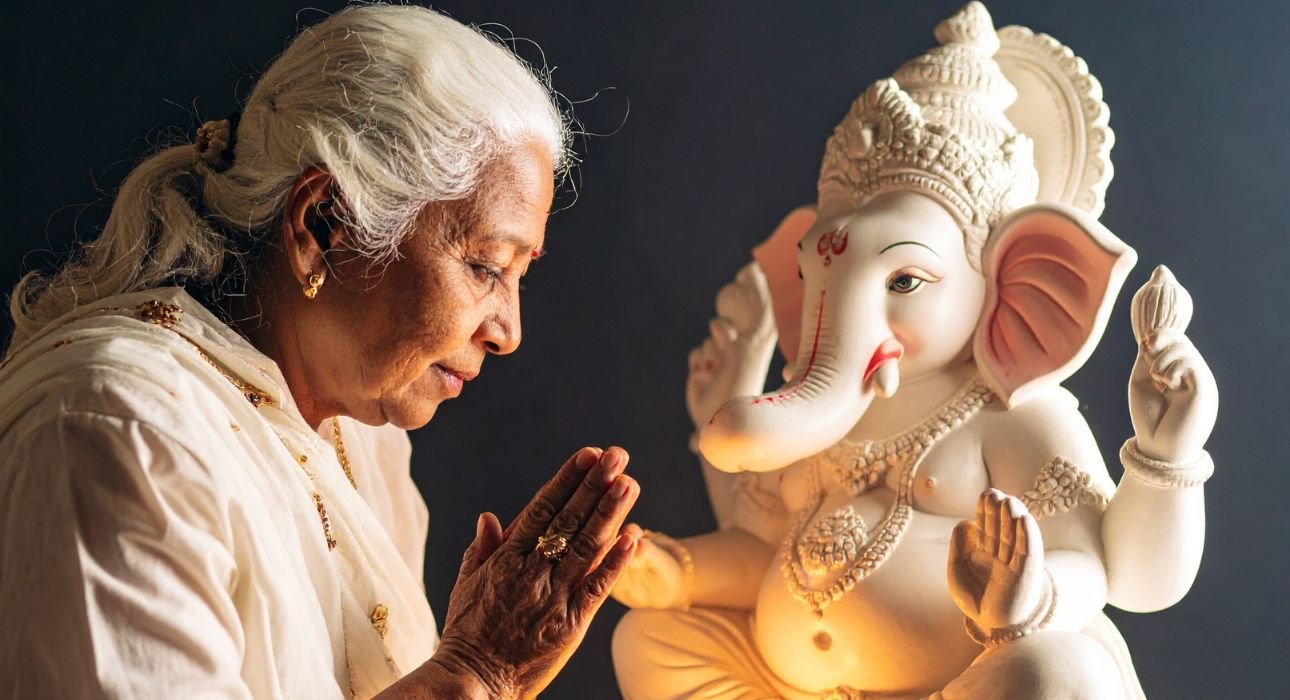Middle age is typically translated in the hues of crisis salt-and-peppered locks, drooping obligation, and dubious discontent. But beneath, though, is also an age of profound psychological awakening. For the rest of us, especially in cultures like India, in which age and wisdom are inseparably tied, middle adulthood is an inescapable moment of perception and religiosity in search of. This aged adult nervously raises the ultimate query: Have I lived well? What is there to life otherwise? Who am I beyond a certain role? The search for the meaning of the spirit is something other than an abstract indulgence but is instead a psychological necessity.
Read More: Psychology of Spiritual Awakening: Transforming Self and Society
The Midlife Psychology: Midlife Transition, Not Midlife Crisis
While the “midlife crisis” is a familiar term, psychologists have begun to favour “midlife transition.” According to Erik Erikson’s theory of psychosocial development, midlife adults (about 40–65 years of age) are faced with the issue of the eighth stage’s developmental crisis of Generativity vs. Stagnation. They are asked to determine if they are contributing something to the world or if they are just going through the motions (Erikson, 1950/1982). Spirituality is the yardstick by which contributions—or the lack of contributions—are assessed. The correlate of midlife for Jung is the age of individuation: the union of the unconscious and conscious self. Religious observance, meditation, or reflective meditation are among the techniques employed in the inner process of wholeness (Jung, 1933).
Read More: 7 Tips to Deal with Midlife Crisis
Facing Death: The Mirror of Time
In early adulthood, the focus is on ambitions: school, career, relationships, and status. Midlife, however, brings a forceful correction. Coming to terms with the limited nature of life, the impossibility of the comeback of youth often coincides with the faint but powerful existential anxiety. It asks the type of questions like “What is after death?” or “Have I lived?” (Lachman, 2015).
This awareness of death is hardly gruesome. It has the potential to be extraordinary. The midlife adult who thinks about passing away values relationships, meaning, and legacy more, according to mental health studies (Becker, 1973; Solomon, Greenberg, & Pyszczynski, 2015). Others turn to spirituality, which offers solace and insight, as a means of coping with these problems of existence.
Read More: Humanistic and Existential Psychology: Foundations, Philosophies, and Contributions
Cultural Insight: The Indian Perspective
Middle age in India coincides with the age of transition in society. They have had to play intense roles for years—those of the professional, the caregiver, and the provider. When they reach their 40s or 50s, their responsibilities usually begin to decrease, and they are finally permitted to have personal time, marking a turning point in their lives (Saraswati, 2001).
Indian philosophy, particularly Hinduism, refers to the life stages (ashramas) as Brahmacharya (learning), Grihastha (householder), Vanaprastha (withdrawal), and Sannyasa (renunciation). Middle age is typically linked to vanaprastha when individuals begin to shift their focus from material roles and responsibilities to self-reflection (Sharma, 2016). Even beyond religion, this shift is naturally supported by India’s rich cultural fabric, which is full of traditions, ancestry, and generational knowledge. Activities such as yoga, satsangs, and pilgrimages are less traditions than they are psychological reference points for the person undergoing inner transformation (Singh, 2013).
Read More: The Depths of Indian Psychology: Traditions and Modern Insights
Changing Priorities and Emotional Maturity
The emotional world of the person also changes with age. Studies in developmental psychology also validate the dominance of value-oriented living and emotional regulation in midlife (Carstensen et al., 2011). Material success, which is once motivated, loses its sheen. There is also an added preference to seek:
- Peace of mind over performance.
- Connection, not competition.
- Meaning vs. efficiency.
Spirituality here is the most personal of ventures, whether through religion, mindfulness, the outdoors, or remaining still. It is the search for something greater than the self, but in no respect is it escapism; it is evolution (Pargament, 2007).
Read More: How to cope with Midlife Crisis?
Dealing with Life’s Multifacets
Middle age is also often an age of emotional strain: coping with the loss of parents, watching children leave home, experiencing relationship burnout, or struggling to manage long-existing physical problems. Spirituality instructs coping techniques that are increasingly endorsed by research. For instance, mindfulness-based techniques are shown to reduce stress, enhance grey matter in the brain, and promote resilience (Goyal et al., 2014). Prayers and rituals also provide a sense of control, belonging, and continuity. Even small practices like going to the temple or listening to devotional songs can be an emotional release in India (Rao, 2012).
Read More: Impact Of Midlife Crisis On Women’s Cognitive Health
The Value of Reflection and Legacy
The shorter future and the broader past tend to fixate the mind on the legacy. It is the spiritual meaning that lends words to these inexpressible longings:
- “What will I leave behind?”
- “How will I be remembered?”
- “Was it all worth it?”
These are questions that provoke reflection and invoke psychological reconciliation with oneself, with past decisions made, and even with unresolved relationships. Some seek to do journaling, meditation, or community service as redemption or completion (Vaillant, 2002). It is often less about dogma than healing.
Read More: Attending to Ageing and its process: Understanding the journey of growing older
Conclusion: A Necessary Process
Middle age is the stillness of the spirit. It is the time when the external world begins to recede in concreteness, and the internal world begins to beckon. Through formal religion, through spirit work, and through philosophical meditation, the desire to find deeper meaning is the shared longing. And in place of the crisis, the quest is the possibility of deepening.
In India, where the spiritual mode of being is an inherited tradition for so many, the passage is usually well accompanied by culture. But wherever the map, the search for spiritual insight in midlife is an articulation of the profound truth of the human condition: that after ambition, survival, and role, we are searching beings—in the simplest language, wanting to live, but wanting to live for reasons.
FAQs
1. Why do people start seeking spiritual meaning during middle age?
Middle age often brings life transitions, mortality awareness, and emotional shifts that prompt people to search for deeper meaning, fulfilment, and connection beyond routine roles.
2. Is the search for spiritual meaning the same as a midlife crisis?
Not exactly. While some experience distress, most undergo a midlife transition, marked by reflection, growth, and a desire for inner peace rather than chaos or impulsive change.
3. How does Indian culture influence this spiritual shift in midlife?
Indian traditions like the ashrama system encourage spiritual focus in later life stages. Practices like yoga, rituals, and pilgrimages offer structured ways to process inner change.
4. Are these spiritual changes limited to religious people?
No. Even those who identify as spiritual but not religious often explore mindfulness, philosophy, or community-based meaning-making during midlife.
5. What psychological benefits does spiritual reflection offer in midlife?
It improves emotional regulation, reduces existential anxiety, enhances resilience, and fosters a sense of purpose and legacy.
6. Can spirituality help cope with midlife challenges like loss or health issues?
Yes. Research shows that spiritual practices provide coping mechanisms, emotional strength, and a sense of continuity during grief, illness, or identity shifts.
7. Is it ever too late to explore spiritual meaning?
Never. Middle age is an ideal time for introspection, as individuals have the maturity and life experience to reflect deeply and live more consciously.
References +
Becker, E. (1973). The denial of death. Free Press.
Carstensen, L. L., Turan, B., Scheibe, S., Ram, N., Ersner-Hershfield, H., Samanez-Larkin, G. R., … & Nesselroade, J. R. (2011). Emotional experience improves with age: Evidence based on over 10 years of experience sampling. Psychology and Aging, 26(1), 21–33. https://doi.org/10.1037/a0021285
Erikson, E. H. (1982). The life cycle completed (extended version). Norton. (Original work published 1950)
Goyal, M., Singh, S., Sibinga, E. M. S., Gould, N. F., Rowland-Seymour, A., Sharma, R., … & Haythornthwaite, J. A. (2014). Meditation programs for psychological stress and well-being: A systematic review and meta-analysis. JAMA Internal Medicine, 174(3), 357–368. https://doi.org/10.1001/jamainternmed.2013.13018
Jung, C. G. (1933). Modern man in search of a soul. Harcourt Brace.
Lachman, M. E. (2015). Mind the gap in the middle: A call to study midlife. Research in Human Development, 12(3-4), 327–334. https://doi.org/10.1080/15427609.2015.1068048
Pargament, K. I. (2007). Spiritually integrated psychotherapy: Understanding and addressing the sacred. Guilford Press.
Rao, K. R. (2012). Psychological insights in Indian scriptures. Journal of Transpersonal Psychology, 44(2), 129–147.
Saraswati, B. N. (2001). The sacred in Indian culture. Indira Gandhi National Centre for the Arts.
Sharma, A. (2016). Classical Hindu thought: An introduction. Oxford University Press.
Singh, R. (2013). Ageing and spirituality in India. Indian Journal of Gerontology, 27(2), 182–194.
Solomon, S., Greenberg, J., & Pyszczynski, T. (2015). The worm at the core: On the role of death in life. Random House.
Vaillant, G. E. (2002). Aging well: Surprising guideposts to a happier life from the landmark Harvard Study of Adult Development. Little, Brown.













Leave feedback about this